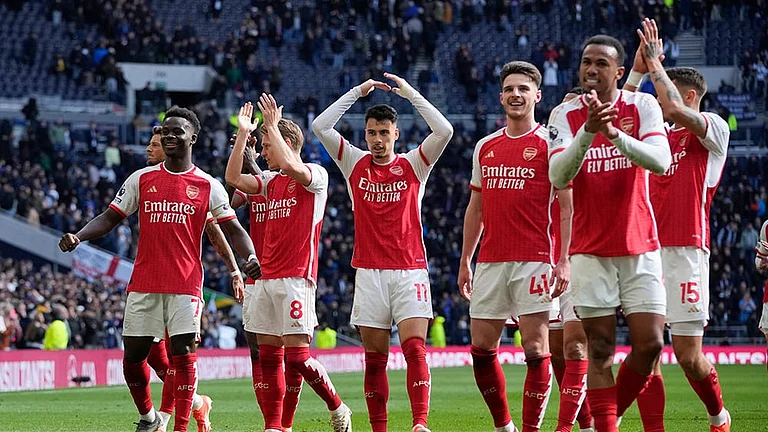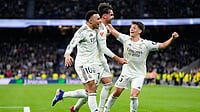Till not so long ago, there used to be a commonly-held perception that Indian track and field athletes are 'also-rans' at major global events. The perception wasn’t entirely untrue, considering how sparsely Indians appeared on our TV screens during Olympic track-and-field events, and how rare top-flight medals were. It took just one young man and his soaring javelin to change that, perhaps forever. (Medal Tally | Cricket World Cup)
Neeraj Chopra arrived on the scene with his rustic charm and insatiable appetite for growth. He did not have a ceiling to his imagination of how far the javelin could fly. He trained with the mindset of a world champion. And then he became one.
The 25-year-old has won every major track-and-field event there is — Olympics, World Championships, Diamond League, Asian Games and Commonwealth Games. But he is not done yet. Throwers have “no finish line” as per Neeraj and his only competition is with himself, wherever he goes.
Neeraj is not the only contemporary Indian track-and-field athlete with this winning mentality, however. While the man from Khandra, Haryana, overcame official incompetence and an inspired Kishore Kumar Jena to expectedly defend his Asian Games title, there were many other triumphs that exemplified ambition in Hangzhou.
Neeraj’s women’s counterpart Annu Rani had a season-best throw of 59.24m before the Asiad, but she bettered that mark twice in the final and came up with a 62.92m throw to annex the gold. Kishore, too, smashed his personal best twice in two throws and finished just one metre shy of Neeraj (87.54m throw as against Neeraj’s 88.88m) in second place.
Several other Indians, including Kartik Kumar and Gulveer Singh in the men’s 10000m, Ancy Sojan in women’s long jump, Vithya Ramraj in women’s 400m hurdles and Tejaswin Shankar in decathlon recorded their personal best times during the event. Vithya’s mark equalled the national record set by the legendary PT Usha at the 1984 Los Angeles Olympics, and Shankar’s performance shattered the existing national record set in 2011 by Bharatinder Singh.
A defining visual of this edition of the Games was Parul Chaudhary summoning every ounce of strength to mount a late surge in the last 50 metres of the women’s 5000m race, leaving Japan’s Ririka Hironaka with no time to react and grabbing the gold by the scruff of its neck.
In all, Indian track-and-field athletes brought home 29 medals, six of them gold, making it India’s best returns in athletics since the very first edition in 1951, when the country had secured 34 medals, including 10 gold.
The sport was the single-largest contributor to India’s medal tally in the 19th Asian Games, but that should come as no surprise to anyone, considering how happy a hunting ground the Asiad has been for track and field historically.
India has accumulated 283 track and field medals in 19 Asian Games appearances, and is the third-most successful country in the sport there after China and Japan. Usha is the most decorated Indian athlete in the event’s history, with 11 medals to her name — four of them gold. Sprint legend Milkha Singh too has won four gold medals across the 1958 and 1962 Asian Games.
The yesteryear stars framed the sport’s legacy in India, and modern-day athletes are shaping its future, with their sights set on global glory.


























